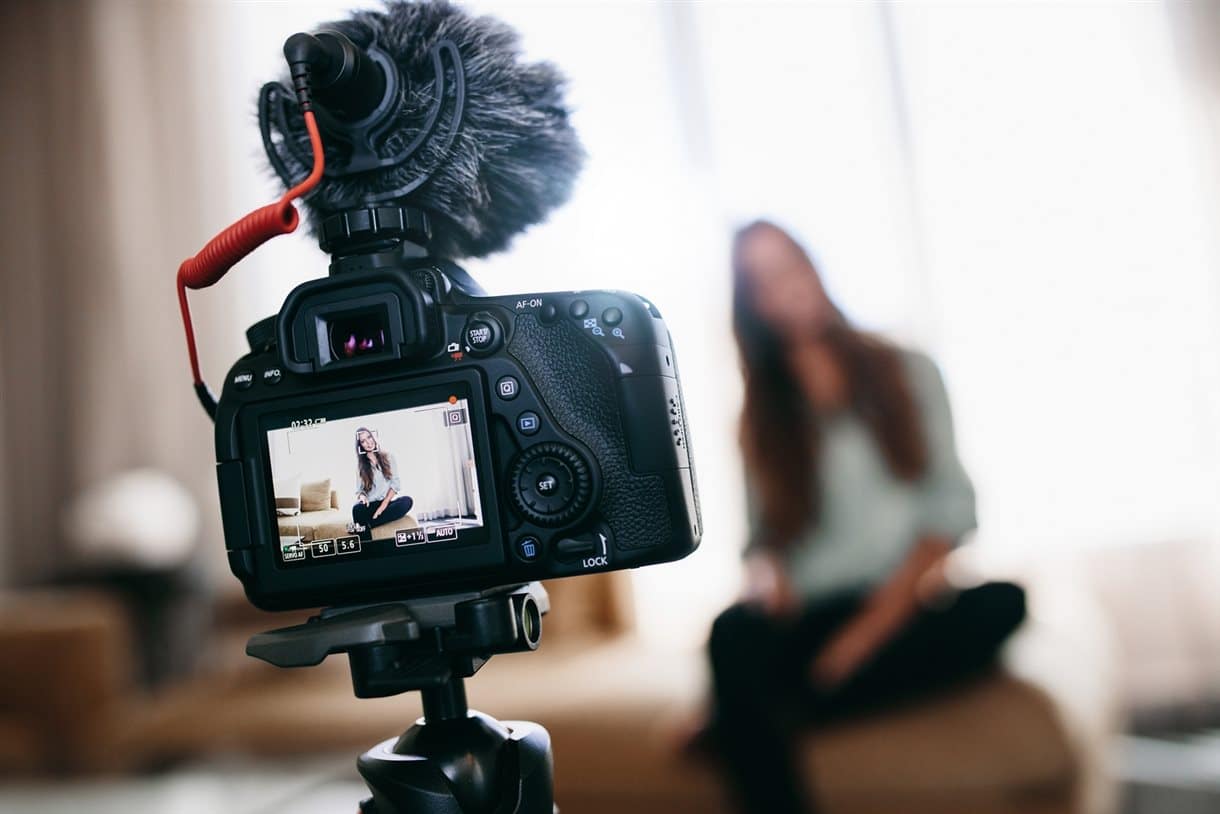Live Streaming: It’s Not Just For Vloggers

Unless you’ve been living offline these past few years, you will have no doubt noticed the rising prominence of livestreaming. From Periscope and Twitch to YouTube and Facebook Live, it is becoming a larger part of social media by the day. Through shows such as Q&As and live gameplay, content creators have been able to create a more personal and authentic connection with their following. However, this is not just the toy of the millennial influencer generation. With 80% of people preferring to consume live content over blogs and social media posts, live streaming is a powerful business tool; if Google and Apple are streaming their conferences with the world, then what’s stopping your company following suit? Today we will break down the world of livestreaming for you, so you can integrate it into your own digital marketing strategy with ease.
What benefit would live streaming have to my business?
There is a large potential to increase your company’s exposure through live streaming. Many studies have been done in the past few years on the audience’s interaction with live content, showing the power of this form of social media. Here are some of the headlines:
– 80% of people would rather watch live content over blogs and social media posts
– Purchase likelihood increased by 77% and brand favourability up by 81% through the use of live streaming
– 48% of Australians have made a purchase after watching a branded video
One of the major benefits of livestreaming is that it is completely unfiltered: it isn’t edited, and mistakes will happen. This transparency increases the amount of trust customers will place on you. Think that consumer trust doesn’t matter? One website has reported that 48% of Americans thing that brands are “less truthful” than 20 years ago. You need people to trust your company if you want people to buy from you, and livestreaming is an easy way to improve this.
As you can see from the data above, livestreaming holds great potential to up your social media presence.
So how can I start livestreaming?
There are many platforms for you to livestream from. Whilst dedicated websites such as Periscope had a short shelf-life, many social media sites have a free livestreaming service ready and waiting for you to use. One thing to note is that livestreaming will only be beneficial once you have an established audience (minimum 500 followers), to ensure enough people watch it to make it worth your while. So, while it is worth taking into account the pros and cons we have listed below for each platform, the best strategy to begin with is to livestream on the platform with the most (engaged) followers.
Facebook Live
1 in 5 videos on Facebook are now live broadcasts, with daily watch time increasing 4-fold between 2016 and 2017. A free platform, you are most likely to get a very varied audience, with Facebook being home to users from 13 to over 65 with a very even split in gender across every age range. There are also a range of post-show analytics for you to analyse afterwards, from peak live viewers to demographics.
Click here to see a full breakdown of how to use Facebook Live.

Clothing label Pull and Bear livestreaming on Instagram from the launch of their new collection, giving their customers an insight into new products and increasing the anticipation for the launch date.
Instagram Live
With a much younger demographic (59% of their user base is 18-29) Instagram Live is more suited to more casual live streams (think office life insights over conference streaming). Whilst you used to only be able to watch them for 24 hours after they finished, you can now save them once they have finished, allowing you to put an edited highlights video (or the full thing) on your story’s highlights or Instagram TV. Furthermore, you have the potential to be discovered by more people if you appear on the explore page. The downside is that you are unable to view analytics for livestreams except the number of viewers, so it may be worth taking note of useful info (such as peak viewership so you know when to make key announcements) until this is changed.
For more information on making Instagram Live work for your business, click here.
YouTube Live
Along with Facebook, YouTube is the best place to put more professional streams content. With 30 million users using the platform daily, and good split across age groups (in March 2015 74.4% of internet users over 65 visited YouTube) it is the best place to find a large and varied potential audience already looking to consume video content. It also provides extra tools, such as a ‘highlight reel’, a hold slide for when you don’t want to show what you’re streaming (you can’t pause streams, only stop and start a new stream, so this is the best alternative). Furthermore, you can embed the stream on other websites (if you have an AdSense account) and have the potential to earn money through them by adding ads (if you are eligible). Finally, videos are saved so people can watch them after they have been initially broadcast.
What are the best ways to integrate it into my online strategy?
There are many ways you can use livestreaming in your business’ social media strategy. Here are a few of out favourite ideas to get you started:
Behind the Scenes
Let people get to know your company. Whether it’s interviews with staff, tours of the office or production site, or sneak peaks of upcoming products, people love to watch behind the scenes content.
 The Royal Opera House continuously produce high-quality live stream content for YouTube and Facebook, with a large amount of audience interaction in return.
The Royal Opera House continuously produce high-quality live stream content for YouTube and Facebook, with a large amount of audience interaction in return.
One company that are pros behind the scenes content is the Royal Opera House. They are often showing behind-the-scenes rehearsals of upcoming shows, live streaming from insight shows that are open to the public so more people can watch them (just see the viewership figures in the accompanying screenshot. In fact, they hold a whole day dedicated to live content in collaboration with ballet companies across the globe on World Ballet Day. This much anticipated annual event shows how a series can be created from live content, encouraging a reoccurring audience to interact with live streams, whilst providing advertisement for upcoming shows and for the company (especially if the viewer has come from one of the other ballet company’s live streams).
Product Demos and Launches
Another excellent way to utilise live streaming is to increase the hype and anticipation around a product launch. This can be done in a variety of ways. If you are holding a talk at a conference or running an entire company conference, then you may want to consider live streaming all of the presentations (or at least the key ones), so that people that aren’t able to attend are still able to find out about product launches.
You could also showcase your products. This might be through demonstrations whether by your staff or, if appropriate, social media influencers. One key example of this form of live streaming is by cosmetics brand Makeup Revolution. They have built a cult following through social media, especially Instagram, and hold regular Instalive events where their featured social media influencers demonstrating new products in live-streamed tutorials. The best way to get a large audience for these sorts of events is by publicising the stream a few days in advance, as can be seen in the following Instagram post.

Q&As
One of the aspects that make live streams so special is the personal view they give of your company. Whilst you should plan a basic outline of what’s to be discussed, the overall feel of it should be unscripted. This makes viewers feel more involved and able to engage with what’s being discussed: the aim is to avoid the stream feeling like a professional business pitch. A good way to avoid falling into this trap and make your videos feel more personable and friendly is to hold Q&As. People can send in their questions beforehand (meaning that you have a definite viewership) and each stream can be with a different member of the company, allowing your following (and potential customers) to get to know the business and staff better – increasing the trust between you and your clients.
Live streaming might seem confusing and not a useful tool for your business, but hopefully, you now have a better understanding of how it can be used to enhance your social media strategy. Still confused? Contact our social media gurus today to find out how we can help!


